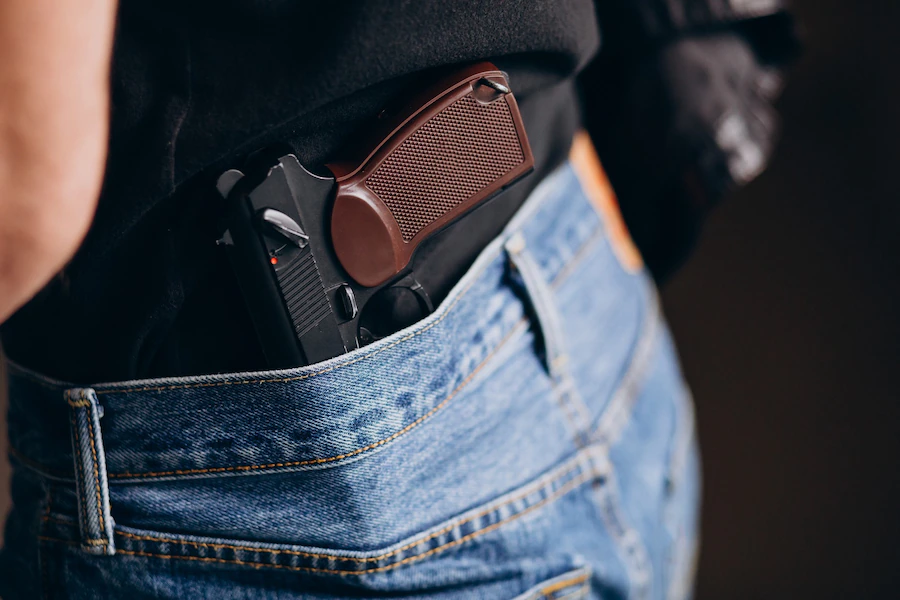If you recently obtained your Michigan CPL license, congratulations. You have made a smart and responsible move to help ensure you have the ability to protect yourself, your family, and your friends when facing an imminent threat of great bodily harm. Now that you have your permit, you might wonder what to do next.
Properly and legally carrying a concealed firearm requires more than having a pistol and a permit. You also need the right gear. Let’s take a closer look at the concealed carry gear you should obtain to legally carry concealed firearms all year long.
Concealment Holster To Secure Your Firearm
You should never tuck a pistol in your pants and count on the belt to keep it in place. You certainly do not want to carry a handgun in your pocket, because that could lead to an accidental discharge that lands you in the hospital and could trigger criminal charges. Instead, you need to obtain a dedicated concealment holster that enables you to carry your firearm securely and without tipping off others to its presence.
For example, a Glock 19 concealment holster should enable you to carry while securing the firearm comfortably. The holster might fit inside the waistband of your pants and have a hook and a belt loop to keep it in place. It also might fit outside the waistband, but you would need loose clothing to cover it – or do open carry where it is legal.
You also might try a shoulder holster that fits comfortably beneath a loose-fitting jacket or shirt, and a belly band holster could keep your firearms on your hip. A pocket or ankle holster could be useful for carrying a backup firearm, such as a snub-nose .38 or Ruger LCP. You might also use one type of holster during the hotter summer months and another during the colder winter weather.
Read Also: What Are The Top Reasons For Hiring A Criminal Defense Attorney
Clothing Is Important For Concealed Carry
Your clothing greatly affects your ability to carry a concealed firearm competently. It also makes a big difference in whether or not you are legally carrying concealed. Clothing that fits too tightly could make drawing and using your firearm impossible in an emergency. That consequence might be deadly.
You also need to wear concealed carry clothing that does not cause imprinting that clearly shows you have a firearm on your person. Loose-fitting jackets and shirts are ideal for carrying a concealed firearm. They give you a natural look without revealing the location of your concealed weapon. A normal-looking outfit that fits well while concealing your firearm is the perfect choice for carrying a concealed firearm.
Additional:























